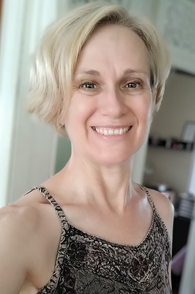Save 25% on an annual BQ Membership!
To celebrate the end of 2025, we\'ve got a flash sale on new Bicycle Queensland annual memberships. From 00:01 ...

Forget the roar of engines, listen instead to the quiet hum gaining momentum on Brisbane’s streets. It’s the sound of two wheels, women cyclists rising above the urban din. They want to reshape the city through their unique perspective, creating a bike culture that’s safe, inclusive, and reflects their needs.
Research shows that generally, the male perspective is evident in decision making re cycling infrastructure design, and Mary thinks this needs to be evened out. The road ahead mirrors Brisbane’s hilly terrain – challenging and demanding a different perspective. A unique perspective that women cyclists have to offer.
Safety concerns loom large. “There have been times,” Mary admits, her voice softening, “when I felt vulnerable, threatened .The lack of dedicated infrastructure and the car-centric culture can be daunting.” This sentiment echoes throughout the female bike riding community, creating a knowledge gap and a palpable hesitancy from women to embrace bike riding.
Mary embodies the spirit of a much wanted change. “We need a shift in the default position,” she declares, her voice firm. “Instead of automatically reaching for the keys, we should ask, ‘can I bike there?’ ‘But this requires more than individual choices. ‘We need active policies that prioritise safe cycling infrastructure designed with women in mind, and empower our female voices in decision-making bodies.”
We asked Mary what would she say to a captive room of government leaders – from the Premier to regional councillors?“There’s a lot of talk about congestion busting. When it comes to the use of transport and driving, the best way to bust congestion is actually to take cars off the road. There’s a whole heap of policies that should be in place that could do that. And one of those policies would be to get people out of cars, and onto other forms of transport, including bike riding. It also has the flow on effect of improving people’s health. I mean, it has a positive impact on health budgets. It has a positive effect on the environment. And it also is just one of those things that really helps connect communities. When you’re riding your bike, you can actually say hi to people, and stop and chat and you know, go for coffee and support businesses. You can’t do that, generally in a car.
Then I’d like you all, to perhaps get together and come up with an active policy which has a stated aim of changing people’s default positions, instead of getting in a car, to start using something else, using an active transport method to get around.”
We’d like to see that meeting.
On a roll, Mary adds, “Brisbane, or any Queensland city for that matter, has the potential to be a cycling haven,” her voice full of optimism. “Imagine a city that’s not just dedicated paths that weave alongside creeks, but a city where children bike ride confidently to school, and where diverse communities connect over shared rides. It’s achievable, but it requires collective action, and especially, listening to the women who see the city differently.”
So, the next time you see a female bike rider, remember: she’s not just a cyclist passing by, she’s a new perspective, a voice that wants to advocate for a more equitable and vibrant city. “We need more women in influential roles, in BUGs, in government, everywhere, not just because it’s fair, but because our unique perspective on safety, infrastructure, and community will benefit everyone”
But how do we get more women involved, if the safety issue is so strong?
Mary thinks that social media, mentorship and accessible, well thought out riding education programs are important pieces of the puzzle. But that we also need to address the infrastructure gap: creating dedicated cycling paths that actually connect the city and feel safe and accessible, especially for women and families. By creating a welcoming environment both online and offline, we can encourage more women to say, ‘Hey, I can do this!’
To celebrate the end of 2025, we\'ve got a flash sale on new Bicycle Queensland annual memberships. From 00:01 ...
Let the State and Federal Government know you want the Logan Faster Rail Active Transport Corridor reinstated</st...
Bicycle Queensland is happy to share the news that Toowoomba Regional Council have endorsed a plan by the Department of Trans...
Bicycle Queensland celebrated a big 2025 with partners, members, advocates and stakeholders in ...